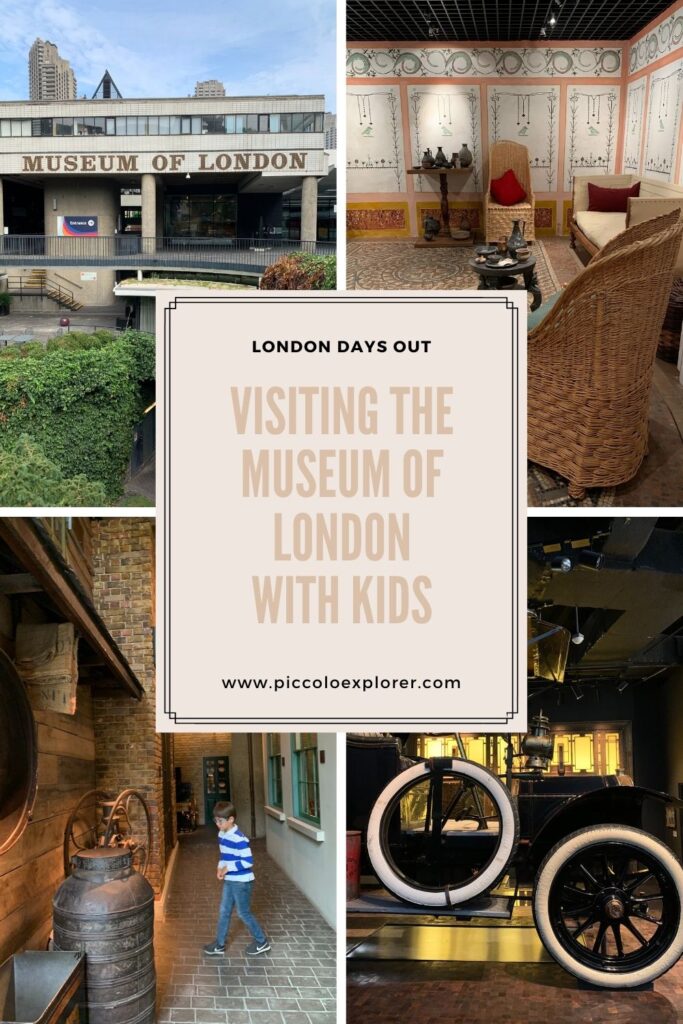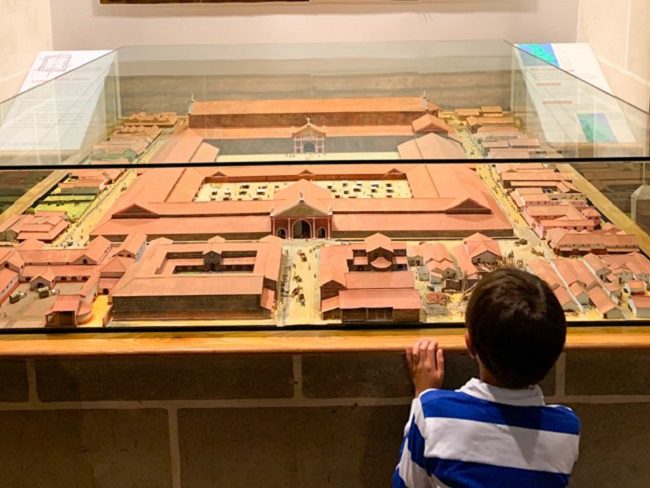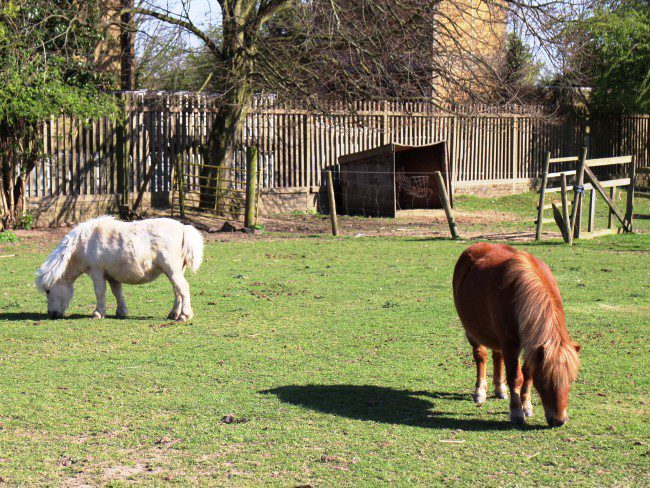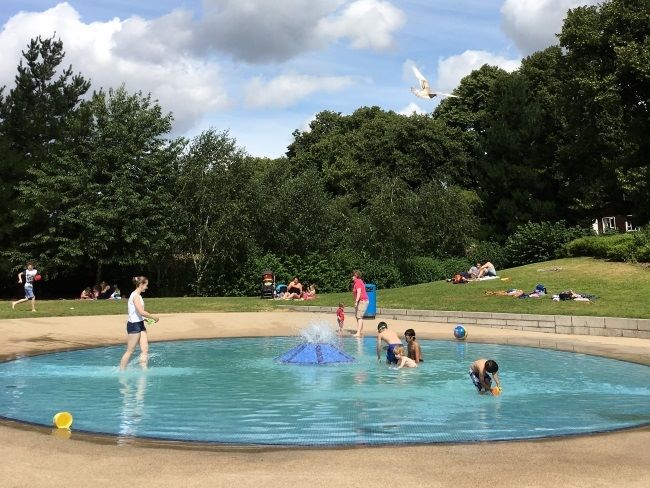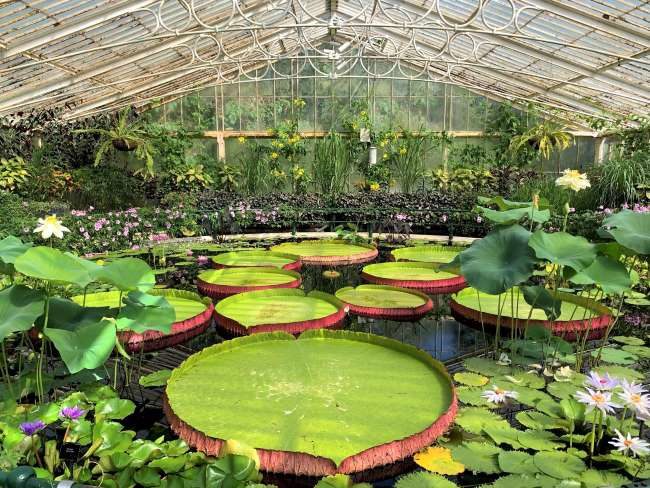Update: Museum of London’s location in the City is now closed and will be re-opening in 2026.
The Museum of London has always been one of the top free museums in London to visit, with an extraordinary collection of more than six million objects from prehistoric to modern times. It was a fascinating place to learn about the prehistoric beasts that once roamed London, see what life was like during Roman times, have a look at a typical Saxon house, see exhibits about the Great Fire of 1666, experience walking along a Victorian street and much more.
The London Wall location is now closed and the Museum of London will be re-opening in a new location in West Smithfield. Read the latest updates about the 2026 re-opening at https://www.museumoflondon.org.uk/museum-london
In this Museum of London with kids post, I’ll share more from our experiences visiting the London Wall location before it was closed in 2022.
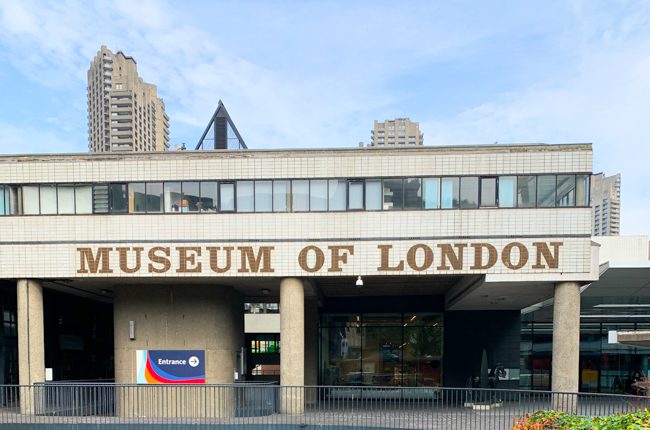
Visiting Museum of London was fascinating for children, with interactive displays and exhibits to explore, from measuring weights in the Roman London gallery to moving London’s iconic transport vehicles around a track in the People’s City gallery.
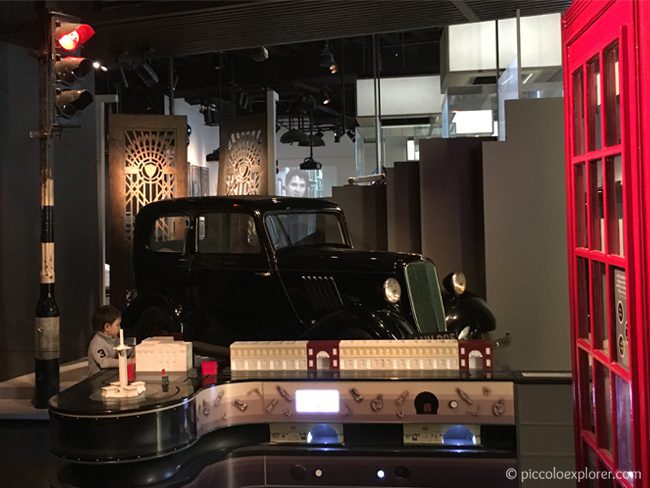
Table of Contents
London Before London (450,000 BC – AD 50)
The first gallery at the museum was London Before London, which explores the lives of the people living in the Lower Thames Valley from around 450,000 BC until the creation of the Roman city of Londinium. Exhibits display evidence found around the city which show that big beasts once roamed London, including rhinos, mammoths and hippos.
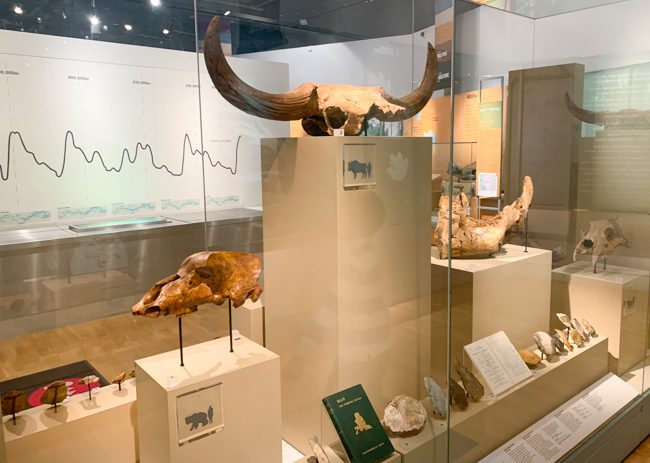
Interesting fact: London’s prehistoric landscape was similar to today’s central African plains. 125,000 years ago hippos lived in Trafalgar Square!
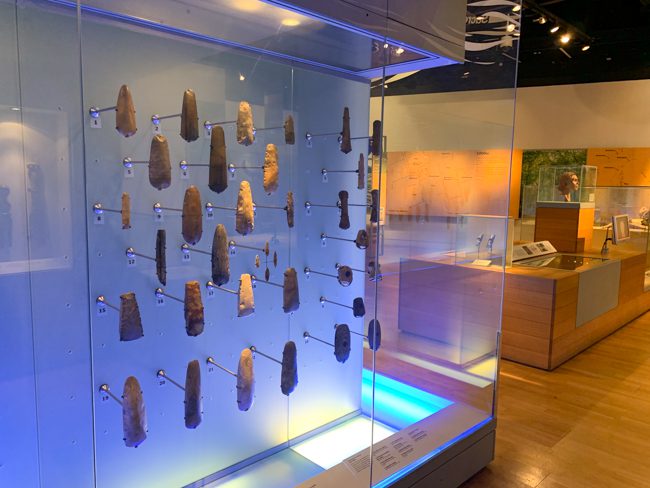
Roman London (AD 50 – 410)
The museum’s Roman London gallery offered a fascinating look into what daily life was like in the city, called Londinium, 2000 years ago. The Romans built the city where London now stands, bridging the Thames and founding Londinium in AD 47.
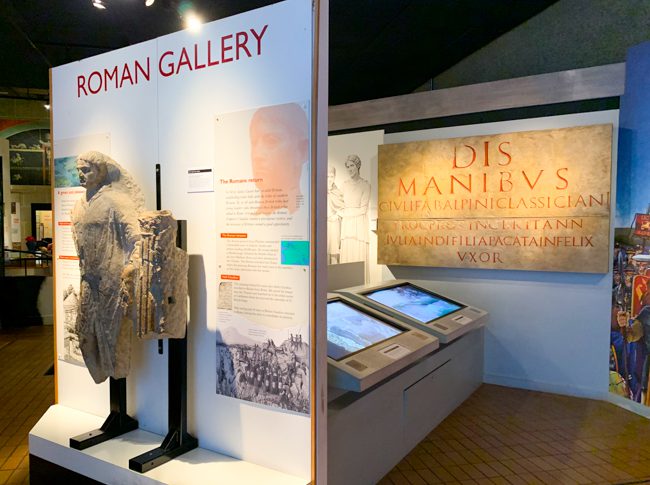
Interesting fact: From around AD 50 to 410, Londinium was the largest city in Britannia and a vital international port.
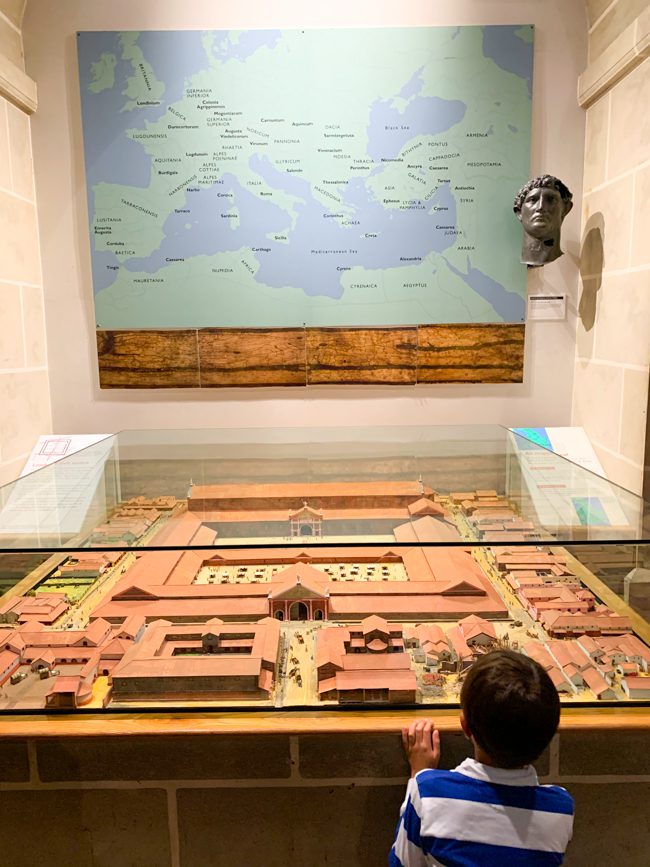
The Museum of London’s Roman collection includes over 47,000 objects, mostly recovered during building operations in the City of London and Southwark.
Below is a replica of a portable stall for selling knives and other small cutting tools. Apart from the bundles of replica knives and the wooden handles, the knives and tools are original and came from Roman London.
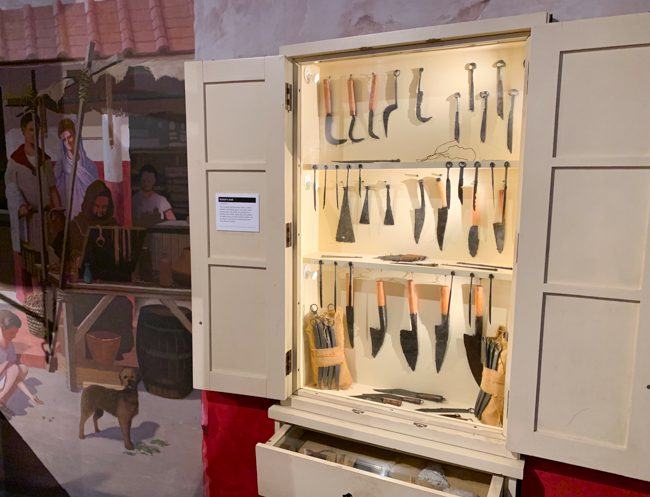
The objects in the collection reflected how the people of Londinium worked, worshiped, relaxed and played. Part of the gallery offered a look into a typical home at the time. The mosaic below is called Bucklersbury Mosaic, dated AD 250, and was discovered in Queen Victoria Street in 1869.
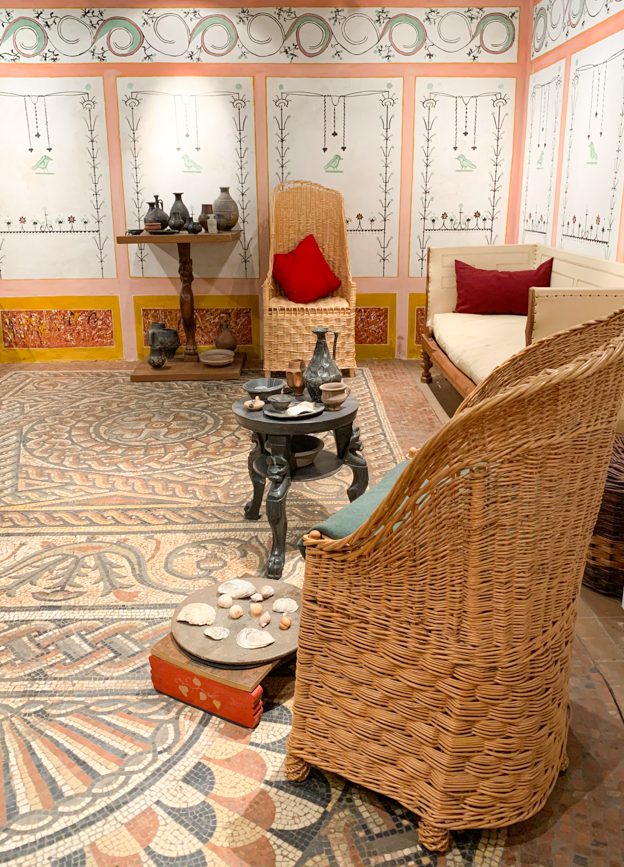
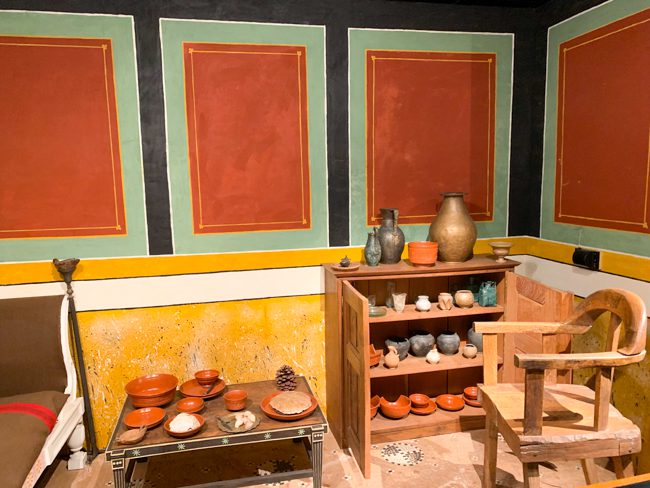
Roman London Wall Fragments
Fragments of the Roman London Wall could be seen just outside the Museum of London. This is the view of what remains of London’s city wall, a mix of Roman, medieval and Victorian building.
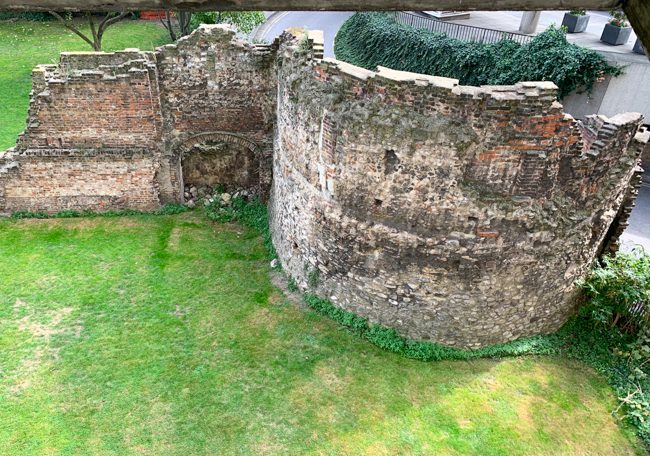
When you exited the museum heading towards Barbican Centre, there was a view of the other side of the wall fragment. 2000 years ago, this was a fort guarding the edge of the city.
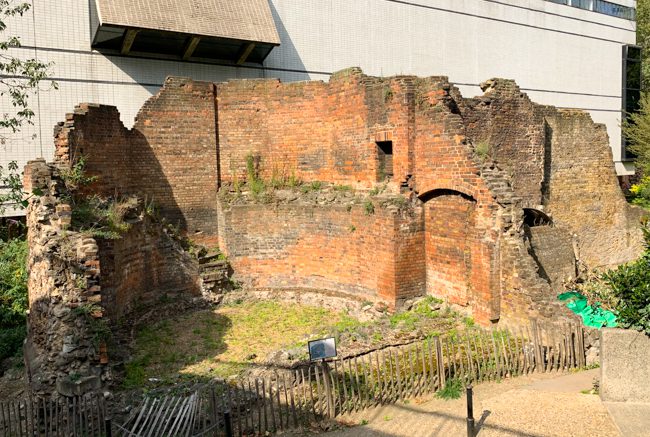
Medieval London (410 – 1558)
The next gallery covered the collapse of the Roman city to the accession of Queen Elizabeth I. During this period of time, London grew to become one of the wealthiest and most important cities in Europe.
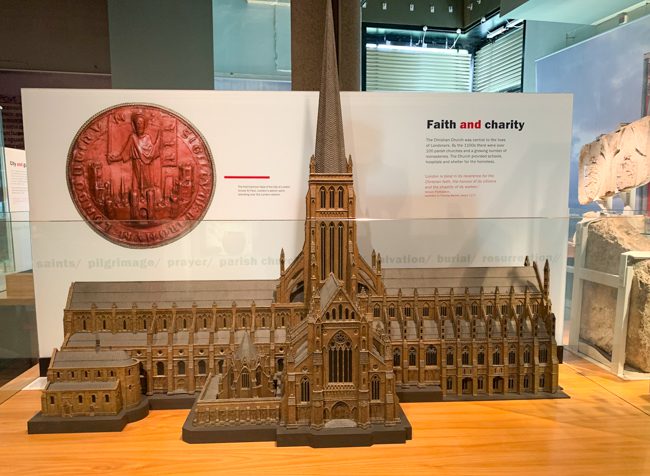
There was a reconstruction of a typical house in this gallery (not shown) that shows what everyday life was like in the late Saxon town of Lundenburg.
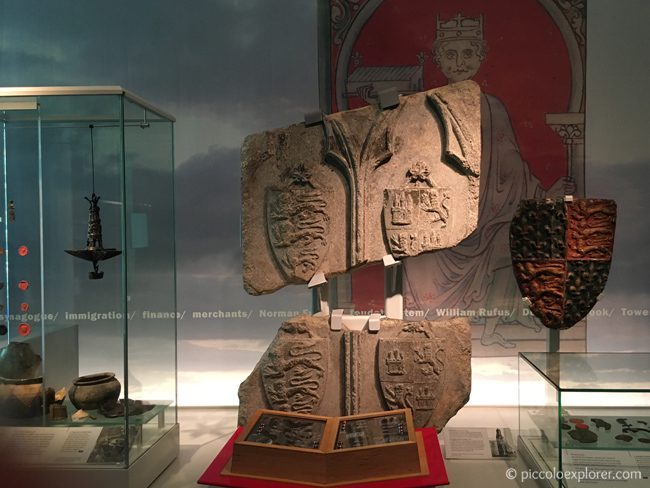
Interesting fact: London Bridge was fortified to stop Viking raiders from sailing up the Thames
War, Plague and Fire (1550s – 1660s)
One of the most turbulent periods in London’s history, the city experienced the execution of King Charles I in 1649, the plague in 1665 and the Great Fire of 1666.
Below is part of a fire engine, a barrel on wheels with a central pump, that was built in 1678 following the Great Fire of London.
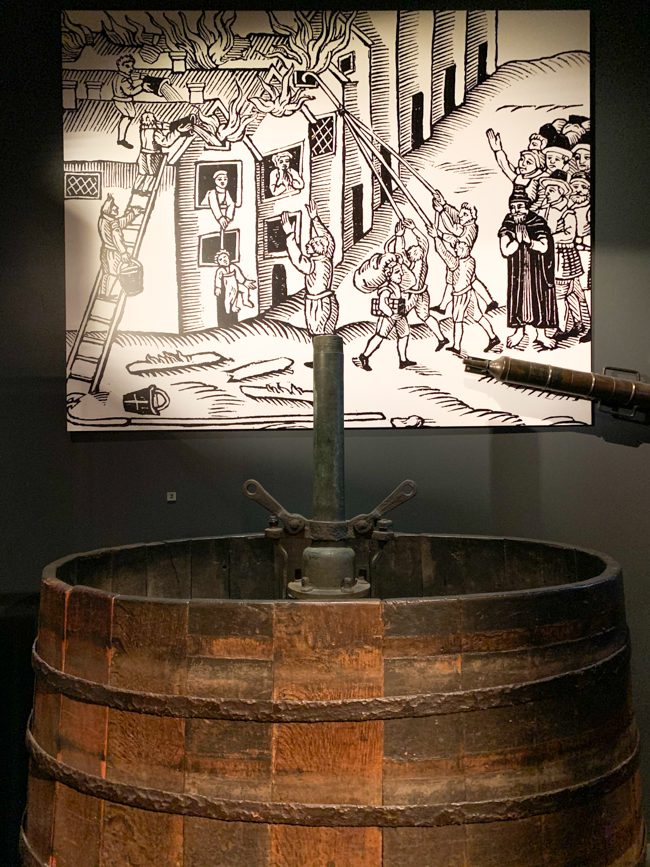
There were some amazing paintings within this gallery depicting the Great Fire. In this gallery, kids could try on a replica of a 17th century helmet worn by firefighters and compare it with a modern helmet from the London Fire Brigade.
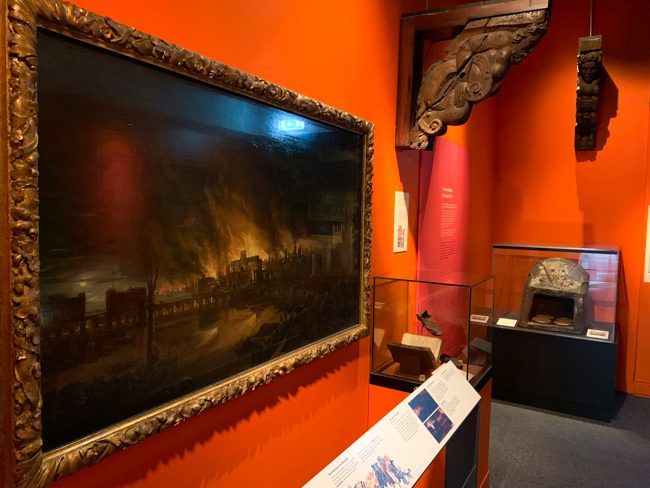
On display was a model (with a cutaway model on the other side) of the Rose Playhouse, built in 1587 in Southwark, which saw first performances of Marlowe’s Doctor Faustus and Shakespeare’s Titus Andronicus.
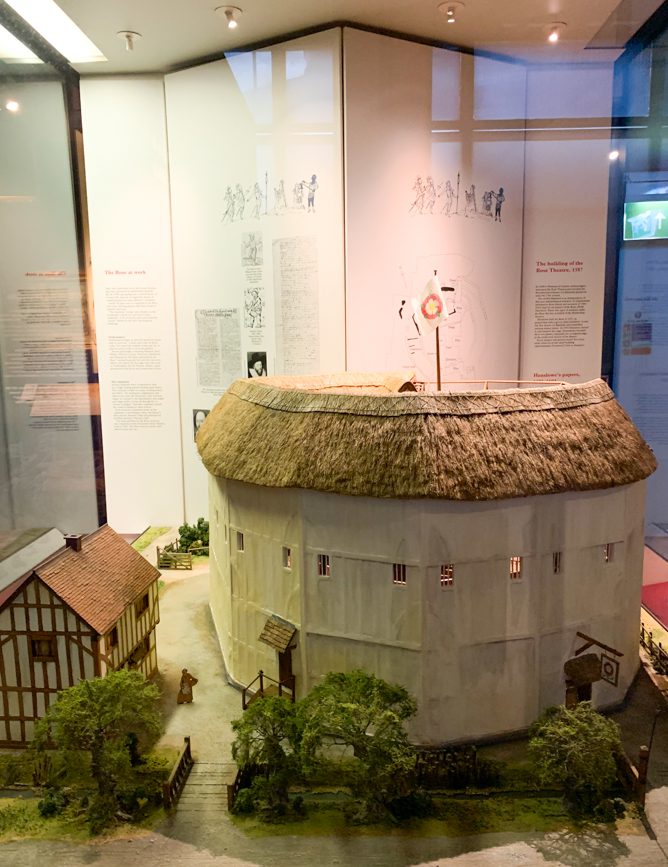
Expanding City (1670s – 1850s)
In the Expanding City gallery, the exhibits offered a look into the many artefacts, dollhouses and stunning gowns, as well as everyday objects recovered in excavations (shown below).
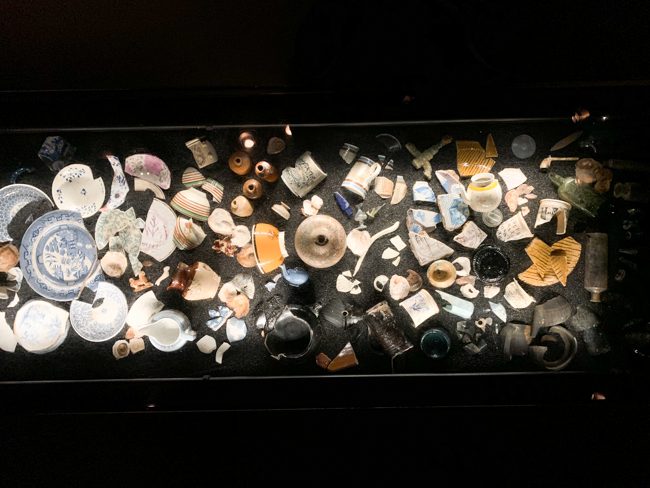
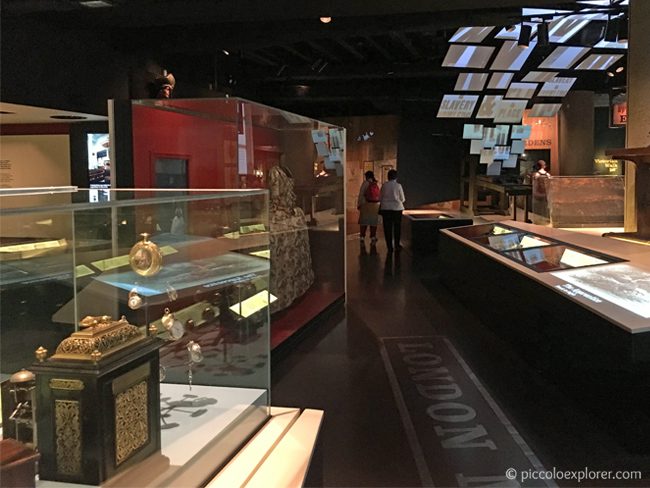
There was also a recreation of Vauxhall Pleasure Gardens, with beautiful fashion displayed.
People’s City Gallery (1850s – 1940s)
My favourite part of the museum was the Victorian walk, where you could experience wandering along the winding streets of 19th century London, with lovely details in each of the shopfronts. A toy shop window showed the typical toys and games during the time.
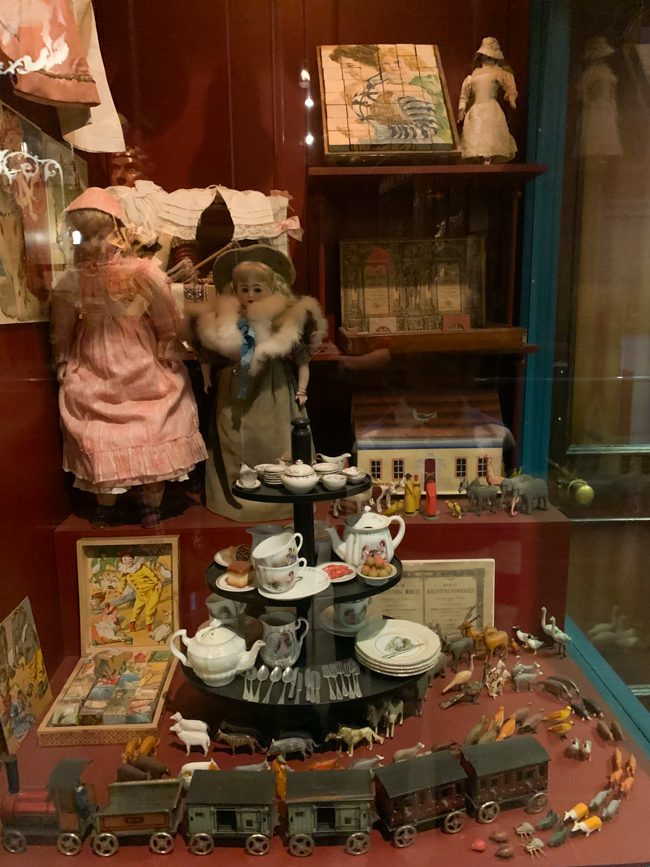
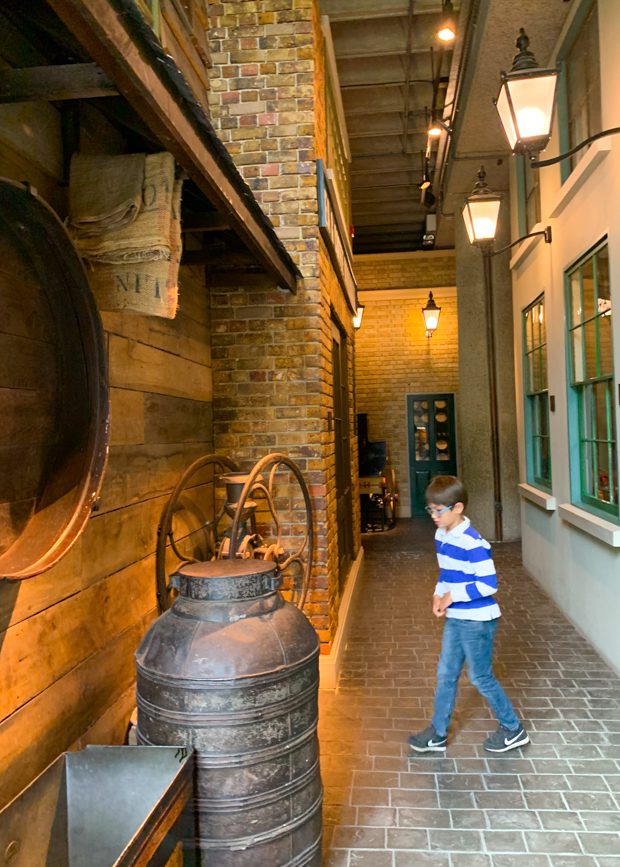
The Victorian Walk featureed a dozen street trades, including a barber, baker, tobacconist, tailor and pawnbroker.
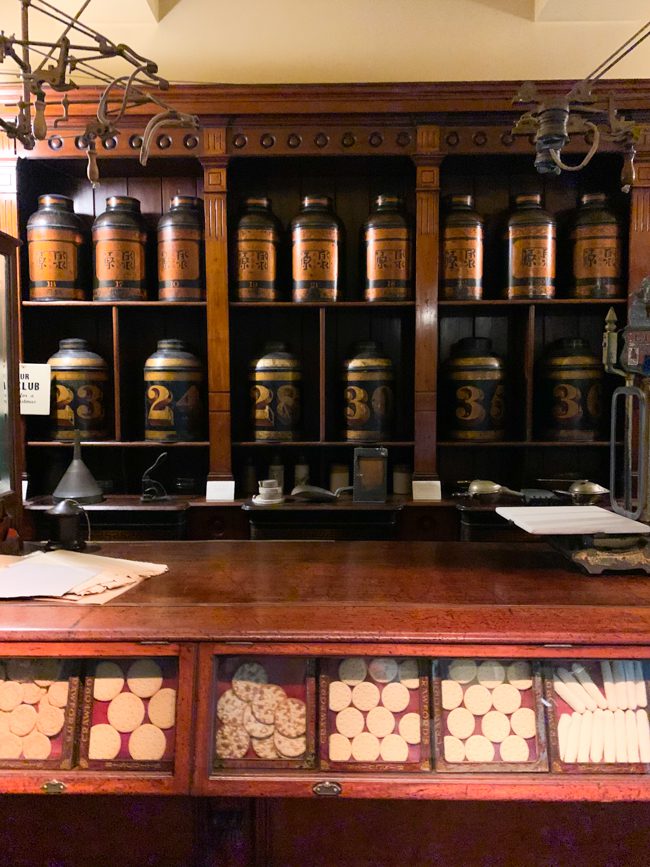
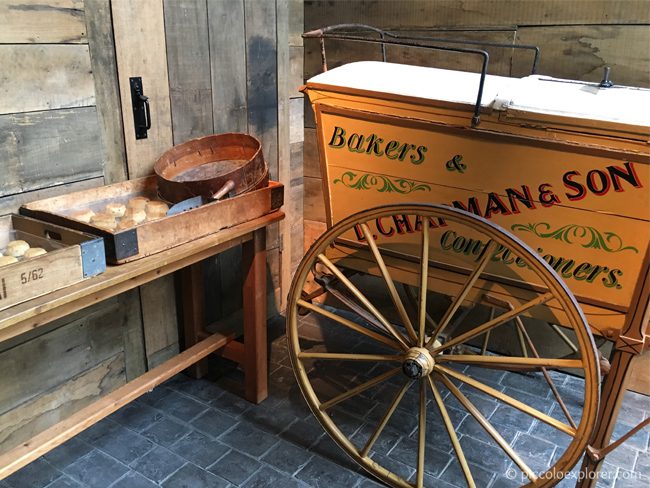
Another highlight was seeing London’s first motor vehicles, such as this taxi from 1908, that would eventually replace the city’s horse-drawn taxis, buses and carts.
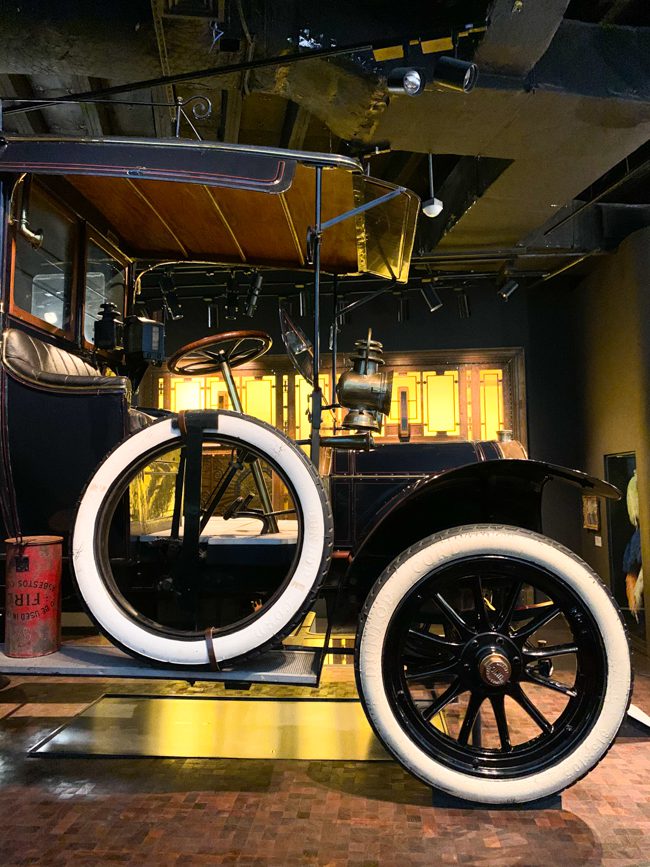
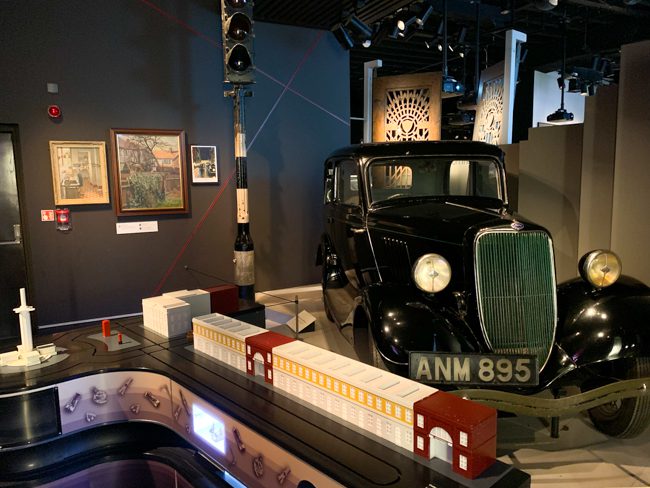
World City (1950s – today)
The final permanent gallery covered the post-war generation – with revolutions in technology, fashion and culture that would transform London.
The London 2012 Cauldron
This iconic sculpture created by Heatherwick Studio was on display here, with footage showing how the cauldron was made and its role in the opening and closing ceremonies. It’s amazing to see up close!
Museum of London Currently Closed
The Museum of London has always been one of the top free museums in London to visit, with an extraordinary collection of more than six million objects from prehistoric to modern times. It was a fascinating place to learn about the prehistoric beasts that once roamed London, see what life was like during Roman times, have a look at a typical Saxon house, see exhibits about the Great Fire of 1666, experience walking along a Victorian street and much more.
The London Wall location is now closed and the Museum of London will be re-opening in a new location in West Smithfield. Read the latest updates about the 2026 re-opening at https://www.museumoflondon.org.uk/museum-london
London Museums with Kids
Read on for more family days out inspiration with our reviews on top museums in London for kids;
Family Day Out at the British Museum
Visiting the Horniman Museum and Gardens with Kids
London Transport Museum with Kids
Day Out at the National Maritime Museum
Dino Snores for Kids at the Natural History Museum
Top Museums in London for Kids
Royal Air Force Museum London with Kids
Cutty Sark Activities for Kids
London Museum of Water and Steam with Kids
National Portrait Gallery London with Kids
This Museum of London with kids post was updated on 9 January 2023 with latest details about the museum, which is currently closed and due to re-open at a new site in 2026.
PIN FOR LATER – Museum of London with Kids
